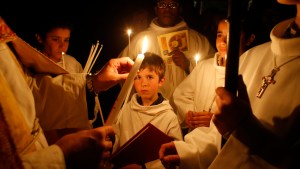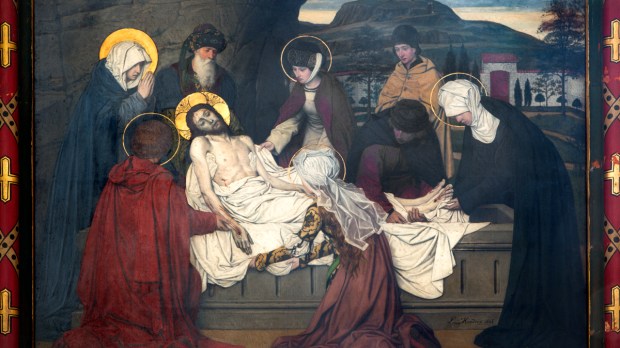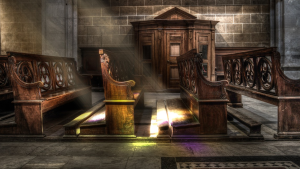The “Catholic both/and” is grounded in the communion of God and man and of God’s place and man’s place. Zooming into the latter “earthly” items in each pair, we again see the both/and at work — beginning with the communion of the spiritual and the physical here below.
We experience in the world two dimensions or “planes” of reality. The first is a higher and transcendent plane, which points up to the Spirit of God and his spiritual world above — a plane of angels, prophecies, and graces, glimpsed through faith and prayer, mysticism and contemplation. The second is a lower and immanent plane, which grounds us in the material and bodily — a plane of animals, plants, and objects grasped through action and the senses. Along which of these planes should we live?
The Catholic answer is of course both. This “both/and” became most vivid on Holy Thursday, when Christ held up bread and wine and declared them to be his own Body and Blood, thereby uniting the highest spiritual reality of God with the humblest physical reality of the “fruit of the earth and work of human hands.” This communion of the highest and the lowest — rightly called “Holy Communion” — is the most important of the “sacraments,” visible signs of invisible grace that draw together the spiritual and the physical in the life of the Church.
We also see the same communion of spiritual and physical reality in the mysterious silence of Holy Saturday, the “Great Sabbath” between Good Friday and Easter Sunday. Indeed, the sabbath itself reflects these same dynamics. We hear in the Gospel of Luke that after the Crucifixion, the women who had followed Christ to the cross returned home, and “on the sabbath they rested according to the commandment” (Luke 23:48).
The sabbath is a day of spiritual withdrawal from physical labor and worldly activity, a day “blessed” and “consecrated” to that higher plane (Exod. 20:8). Yet it also remains a day anchored in concrete bodily experience — a day of eating meals and spending time with family and friends: “Eat it today, for today is a sabbath to the Lord” (Exod. 16:25).
Christ’s tomb likewise draws both spiritual and physical reality together. Seen from one angle, his tomb is a locus of profound spiritual experience: In his soul, Christ “went and made a proclamation to the spirits in prison, who in former times did not obey” (1 Pet. 3:19–20). This “harrowing of hell” was undertaken not in Christ’s body, which lay lifeless, but in his soul, united with his divine person — a purely spiritual mission.
An ancient homily for Holy Saturday beautifully captures this descent “under the earth” by the one above the heavens:
“Today there is a great silence over the earth, a great silence, and stillness, a great silence because the King sleeps; the earth was in terror and was still, because God slept in the flesh and raised up those who were sleeping from the ages … ”
Yet that same divine person, Thomas Aquinas argues (Summa theologiae 3.50.2), remained united with Christ’s flesh in the tomb, just as he remained united with Christ’s soul in Sheol. God, in other words, remained present to both planes of reality — the spiritual and the physical. Nicodemus had lovingly wrapped Christ’s body in linens using a hundred-pound mixture of myrrh and aloes according to Jewish burial custom, and placed it in a new tomb in a lush garden “in which no one had ever been laid” (John 19:39–41). Christ’s great “sabbath rest” after the labor of the cross was, fittingly, enveloped in beautiful sights and smells.
This holy day of watching and waiting, of course, is a prelude to the reunion of Christ’s spirit and flesh in the Resurrection — a fourth communion that lights the Way, in a special way, for man.



